Building resilience: Shelters transform housing
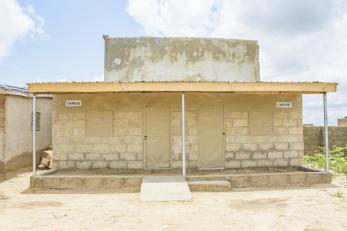
In the wake of ongoing displacement due to the Boko Haram insurgency and other security challenges, housing remains one of the most critical needs for affected populations in northeastern Nigeria. With an estimated 2.2 million people still displaced across Borno State, the importance of providing durable shelter solutions cannot be overstated.
To address the housing crisis for internally displaced persons (IDPs) in northeastern Nigeria, Mercy Corps has launched the Muna Type Transitional Shelter model in Jere Local Government Area, Borno State. The shelter model is named after ‘Muna’, the community where the shelter typology was piloted and scaled up. This initiative is part of the Transitioning Households to Recovery from Vulnerability (THRIVE) program, which is funded by USAID’s Bureau for Humanitarian Assistance (BHA).
The introduction of the Muna Type Transitional Shelter marks a significant step in the program's efforts to provide durable and sustainable housing solutions for vulnerable communities in Borno State. The new shelter model is part of a broader effort to construct 287 sustainable and durable transitional homes across the region, including 72 collapsible shelters and 215 compressed stabilized mudbrick structures, of which 143 have already been completed.
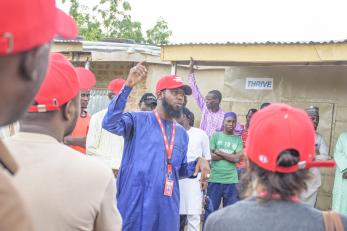
The Muna Type Transitional Shelter was developed as a strategic response to unforeseen technical and seasonal challenges. While many displaced families live in overcrowded camps or temporary makeshift shelters that fail to withstand harsh seasonal conditions, the Muna Type Transitional Shelter offers a more resilient and dignified alternative.
Originally, the program aimed to build stabilized mudbrick shelters, however, the rainy season made production nearly impossible, prompting the Shelter Team of the THRIVE program to explore more adaptable solutions. Their research led to the development of the Muna Type Transitional Shelter—a highly innovative design tailored to meet both the environmental conditions of the region and the immediate needs of displaced families.
The new shelter model features two rooms, each measuring 3m x 3.5m, providing a total of 21 square meters of living space for families, in addition to an 8.64 square meter covered verandah designed for outdoor activities and shade. The design takes into account local cultural practices, where outdoor living spaces are integral to daily life, while ensuring that families have adequate protection from the elements. The shelters, constructed using locally sourced, eco-friendly materials, not only ensure long-term durability but also strengthen the local economy by creating jobs for artisans and laborers.
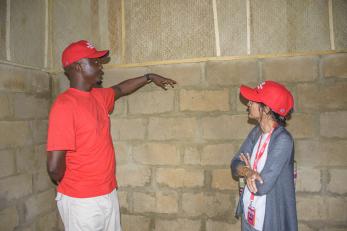
The Muna Type Transitional Shelter offers several advantages over traditional mud brick shelters. First, it is easier to upgrade, improve, and modify, allowing for greater adaptability to changing needs. Additionally, the Muna Type Transitional Shelter is resistant to windstorms, providing enhanced safety in adverse weather conditions. Its construction time is also significantly shorter, making it a more efficient choice. Furthermore, the Muna Type Transitional Shelter has a lower water absorption rate, contributing to its durability and longevity.
The launch of the innovative shelter model was marked by a well-attended commissioning ceremony, where representatives from the THRIVE consortium, community leaders, and local authorities gathered to celebrate this important achievement. The Local Government Area Desk Officer and Monitoring & Evaluation (M&E) Officer, Bulama Gambo, who spoke about the critical need for such shelters, said “This shelter is a major step towards sustainable solutions to the shelter needs in the state. There are still gaps where these shelters are desperately needed”.
“I am calling on the THRIVE program to extend this model to other communities such as Nguro-Soye in Bama, Pulka, Ngala, Dikwa, and Damboa. The need for durable housing is immense, and this initiative is a lifeline for many,” Gambo added.
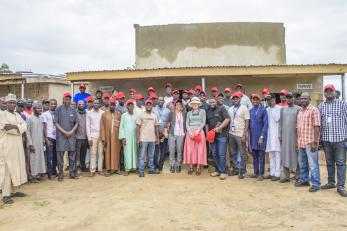
Mr. Hassan Arabi Jidda, Chairman of the Area of Responsibility for the National Commission for Refugees, Migrants, and Internally Displaced Persons, lauded the Muna Type Transitional Shelter as a groundbreaking model for humanitarian housing solutions, commending both its practicality and aesthetic appeal.
“These shelters are not only durable and functional, but they are also presentable in any setting,” Jidda remarked. “They set a new standard for what humanitarian shelters should be. I encourage other NGOs and agencies working in this sector to adopt this innovative design for their shelter interventions.”
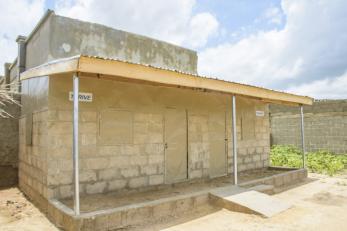
In addition to providing shelter, the THRIVE program is also focused on building the capacity of local communities and boosting their economy. The construction of these shelters has provided employment opportunities for local artisans and laborers, ensuring that the economic benefits of the project are felt at the grassroots level. THRIVE’s approach emphasizes the importance of local ownership and sustainability, ensuring that communities are not only recipients of aid but active participants in their own recovery.
As the THRIVE program continues to innovate and adapt to the needs of displaced populations, it remains steadfast in its commitment to long-term recovery. The launch of the Muna Type Transitional Shelter is just one example of the program’s innovative and adaptable approach. By prioritizing sustainability, local ownership, and the dignity of displaced families, THRIVE is shaping the future of humanitarian shelter solutions in Nigeria and setting a benchmark for other humanitarian initiatives across the globe.
About THRIVE
Transitioning Households to Recovery from Vulnerability (THRIVE) is a two-year program funded by USAID to provide context-specific humanitarian assistance with the goal of initiating early recovery in Jere Local Government Area, Borno State.
THRIVE works in four wards: Mairi, Mashamari, Dusuman, and Maimusari in Jere Local Government Area (LGA), Borno State, to deliver a multi-sectoral, integrated, and coordinated response, informed by participants, that leverages experience and best practices to address the multi-faceted needs and 3/10 aspirations of vulnerable people. Its area-based approach advances participants from lifesaving assistance to life-building support.
THRIVE is implemented as a consortium by the Catholic Relief Services (CRS), Mercy Corps, Women in the New Nigeria (WINN), Salient Humanitarian Organization (SHO), and Justice Development Peace Committee (JDPC).